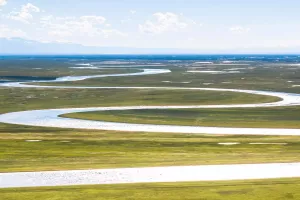There are many mountains, rivers, lakes, seas, icebergs and canyons in the world, all of which attract countless explorers to challenge because of their dangerous and harsh natural conditions. Unlike high mountains, snow-capped mountains are often accompanied by low temperature and low oxygen, which are more difficult to challenge the human body.
Snow-capped mountains attract many outdoor enthusiasts with their unique charm, spaciousness, freedom and crossing the limit. Have you ever thought about climbing Mount Everest and standing on top of the world? Whether it's just a passing thought or a lifetime attachment, you should first calm down and get to know it well. Because the snow-capped mountains hide a lot of danger under the holy appearance.
When you decide to do something, the first step must be to fully understand it. Snow mountain climbing is very difficult. One of the biggest reasons is that the thin air at high altitude and the low-pressure and low-oxygen environment will reduce the maximum oxygen consumption of the human body, resulting in a significant decrease or even loss of the body's exercise ability.
The microclimate in the mountains makes the weather in the climbing process change. This is a headache for all climbers. Bad weather represents unpredictable factors, as well as strong winds, rain and snow, and cooling, which increases the risk of loss of temperature. When climbing the snowy mountains, climbers need to follow a rule, that is, never speak loudly. Snow is covered with snow all year round, so the snow is relatively thick. When you shout loudly, it will generate sound waves with relatively high energy. When the sound waves propagate in the snow-capped mountains, they collide with the mountain walls, which will cause the snow blocks to slide down. It will cause an avalanche during the slide, so no shouting is allowed.
If you are unfortunately caught in an avalanche, you should swim vigorously and repeatedly in the moving snow flow, trying to float to the surface of the snow flow. Because the hands and feet are difficult to move after the avalanche has stopped, try to surface the snow while the snow flow is moving.
Be sure to wear snow boots when walking in the snow, or on the ground that has been covered with snow for a long time. Keep your stride small and steady, walking rhythmically at your own pace. Fatigue is often caused by indiscriminately increasing the speed, or losing the rhythm of the pace too much. It is important to walk at your own pace when walking in the snow.
In the process of moving up, the leader may wish to let the slowest person walk in second place, so that the speed of the team can be easily controlled. Never let the slowest person go last, because that's how accidents tend to happen sometimes. Also, please wear protective goggles when climbing snow-capped mountains to prevent snow blindness.
These are some of the precautions for climbing snow-capped mountains. The purpose of our mountaineering is not to conquer the mountain, let alone to prove our ability and courage. As long as you do what you can with the mentality of integrating into the snow-capped mountains and coexisting peacefully with the snow-capped mountains, it doesn’t matter if you don’t succeed in the end.


